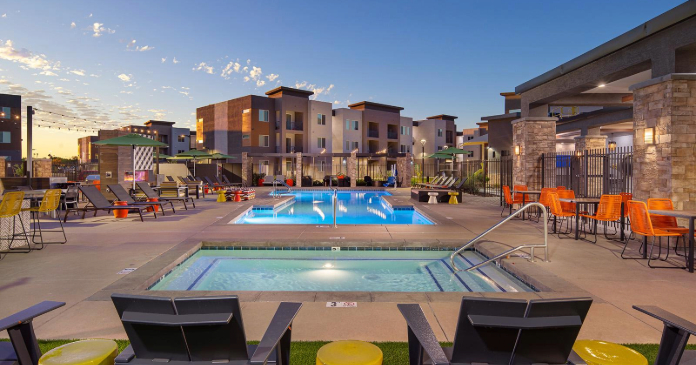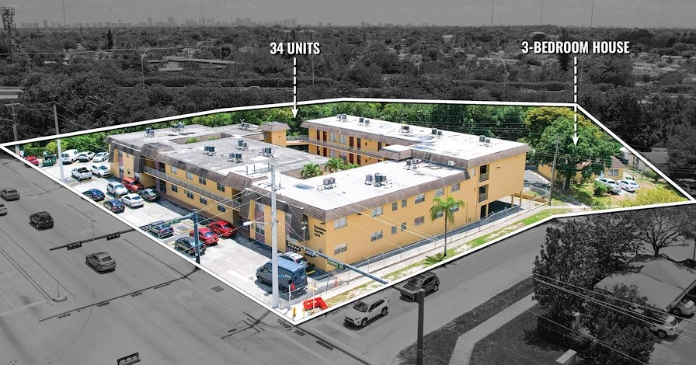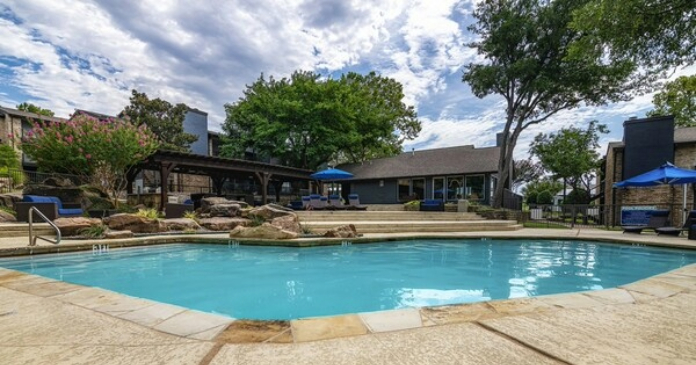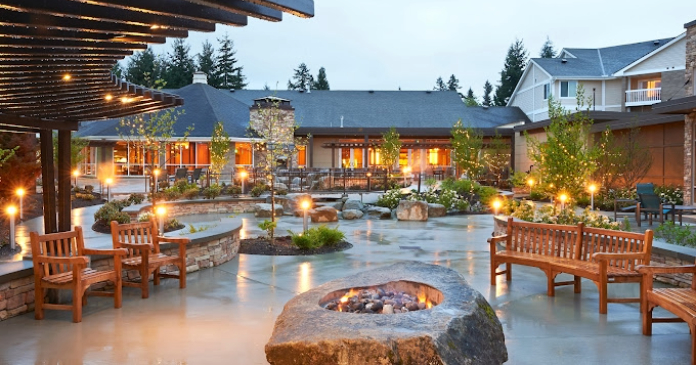Institutional investors have been increasingly interested in the build-for-rent (BFR) space over the last five years. But the pandemic poured gasoline on an asset class that offers residents space, privacy and the flexibility of renting. Now that COVID appears to be receding in some areas, can the BFR sector maintain its growth? Paul Garner, director at Walker & Dunlop, believes that demographic and economic trends will maintain the demand for BFR, especially in the Sun Belt states, for the near future.
Opportunities in the Sun Belt
Garner sees the most potential for BFR growth in suburban areas—particularly those located 15 to 20 minutes outside of a metropolitan statistical area. The economic growth and increasing populations of nearby cities determine whether suburban BFR setups will attract residents.
According to Garner, the dedicated BFR/single-family rental (SFR) team at Walker & Dunlop has started to see a lot of action similar to what they saw on the West Coast (especially in Arizona) four or five years ago. He notes, “BFR properties are becoming increasingly popular all throughout the Sun Belt states, especially Florida and the Carolinas. There’s a potential in this area to get land very, very cheaply relative to what you’d pay on the West Coast.”
Garner explains this focus on the Sun Belt has driven two outcomes: “First, we’re starting to see new entrants. A lot more market-rate, multifamily owner/operators who occasionally dabbled in development have started moving into the BFR space.”
“Second,” Garner indicates, “well-capitalized groups that were originally the first to move into the West Coast are starting to buy land and develop absolutely whatever they can in the Sun Belt states.”
Factors driving continued interest
In many cases, the rising cost of housing in thriving cities makes nearby BFR properties much more attractive to Millennial renters, who may not have the equity to purchase homes in popular, densely-inhabited areas where home prices continue to rise. Garner explains that the amenities, sense of home and overall low cost of living of BFR communities—originally intended to appeal to retirees—often draw Millennials.
The properties attract renters even at a premium over traditional multifamily; Garner notes that the BFR sector has seen a 6 percent annual growth rate this past year.
“I see the BFR trend continuing and persisting, arguably, for the next five years or so. We need more affordable living solutions,” Garner says. He notes that gross pricing of BFR homes is higher on an overall basis than, for example, a three-bedroom, two-and-a-half-bath apartment. But he says the lack of supply of homes in the U.S. and the high pricing of those homes that are for sale helps funnel more people to the BFR product.
Financing BFR communities
As the BFR space has evolved, so too have capital sources. Banks, debt funds and some life companies have entered the BFR lending market. Freddie Mac and Fannie Mae have become active in the space. The agencies view BFR as a horizontal multifamily project and therefore treat it (save for some underwriting variations) much like a conventional vertical apartment property.
Garner says, “The Walker & Dunlop team is currently placing construction debt, bridge debt and permanent debt, as well as programmatic joint venture (JV) equity and is highly experienced across the group in composing and negotiating highly structured BFR solutions, when necessary, for our clients.”
“For financing purposes, the GSEs like to see that the BFR community is noticeably separated from nearby developments or homes that are not part of its community,” explains Garner. “It also helps if the BFR community features its own separate entrance and signage. If the BFR units carry a couple of unique designs that do not resemble that of any nearby for-sale properties, that is also a positive. The project needs to be purpose- built and must operate as a rental community from the commencement of construction.”
Garner further explains how agencies see these assets. “The BFR community is often located on a single tax parcel. If the BFR development consists of individual homes on separate tax parcels, each parcel or lot should aim to be contiguous, though certain exceptions may be granted. GSEs will generally pass on financing properties that were originally built as for-sale and then remaining homes were converted to rentals. Detached and non-contiguous BFR communities are not financeable through the GSEs currently.”
“BFR communities should also feature amenities that are shared within the subject community, unless the location is infill, in which case it may not economically make sense for the amenities to exist,” Garner elaborates. “The agency minimum loan size is $6 million and an in-place HOA, solely for the community itself, is recommended, without inclusion of other outside ‘non-collateral’ components.”
Garner describes a recent deal, Pepper Hall Townhomes, a build-for-rent BFR project consisting of 121 units, located in Bluffton, S.C. Garner arranged both debt and equity financing for the land acquisition, the horizontal development, and the vertical development of Pepper Hall Townhomes. He identified a JV equity partner to co-invest with the sponsor and advise in the construction process, as necessary. Separately, Garner secured, negotiated and closed a $22.2 million acquisition, development and construction facility on behalf of the sponsor.
The role of regional home builders
As the BFR space has expanded, Garner sees regional home builders transitioning into the space. “I think that in order to get the right financing terms, you must show that you can build townhomes, specifically stick-built townhomes. You need to do a great job at it and deliver in a timely manner. What we’ve seen watching these groups and helping them turn into portfolio, commercial owners, is that JVs and partnerships are holding on to their regional home-building segment, and temporarily reallocating more effort over to the BFR development side.
Rather than staff up on the BFR side, they create a venture a partnership with a BFR or SFR operator. It’s a great way to double the amount of production, because it allows the home builders to do what they’re great at, and what they were initially sought out for by lenders with aggressive lending terms.”
Source Sarah Daniels, rebusinessonline.com















